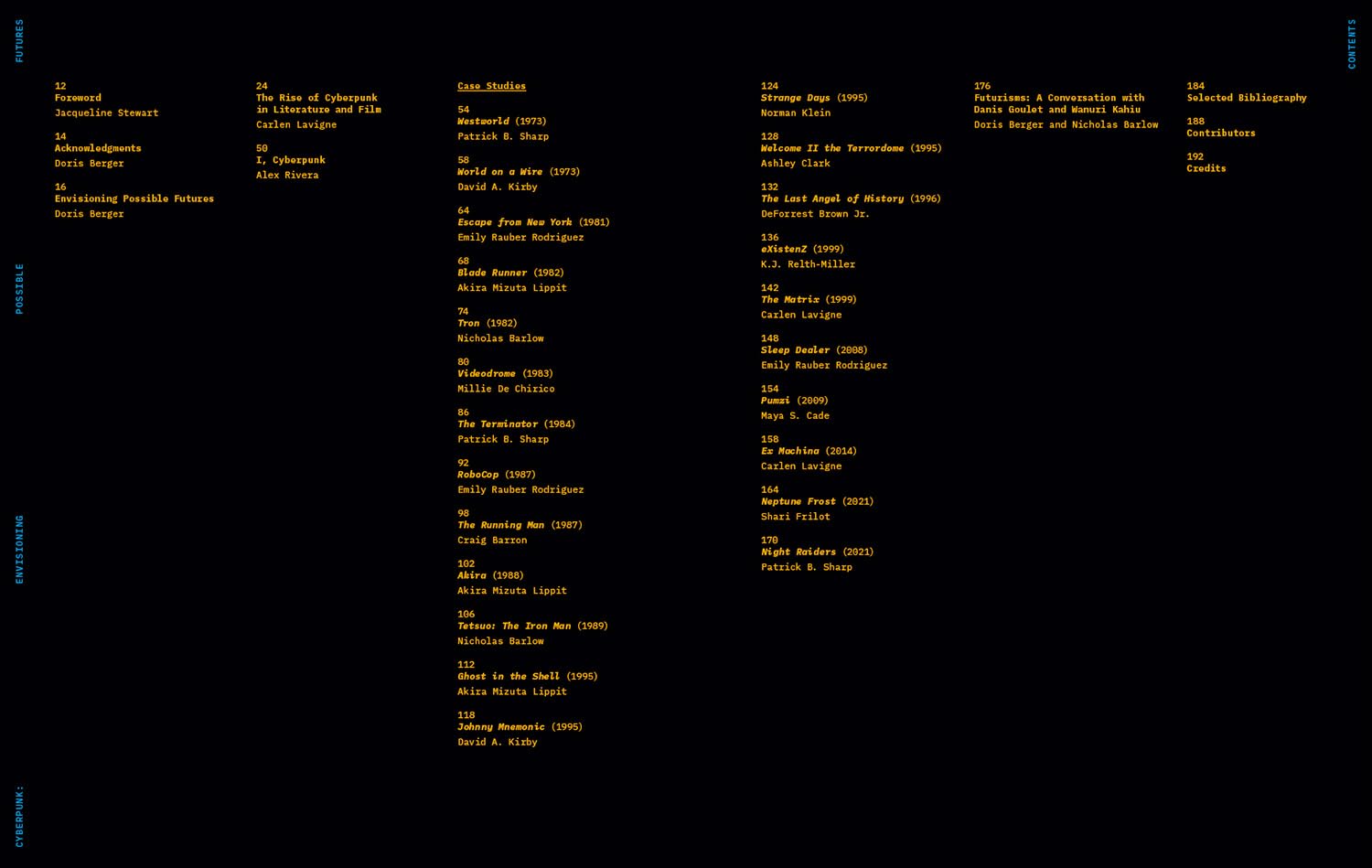Book Review: Cyberpunk: Envisioning Possible Futures through Cinema
As an avid fan of science fiction, particularly the cyberpunk genre, I was drawn to Cyberpunk: Envisioning Possible Futures through Cinema because it promises a deep dive into the aesthetics and themes that have shaped this fascinating subculture. Cyberpunk has always resonated with me due to its melding of high-tech futures with gritty social realities, and I was eager to see how the book would explore its legacy in cinema.
The book is visually striking, featuring an array of rarely published behind-the-scenes photographs, film stills, and concept art. The overview of iconic films like Blade Runner, Tron, and The Matrix is a highlight, as they serve as cornerstones of the genre and are artfully examined throughout the pages. I found the inclusion of more recent films, such as Neptune Frost and Night Raiders, to be refreshing. These newer stories showcase how the genre has evolved and adapted, providing a contemporary perspective.
One notable aspect of the book is its case studies, with over 20 contributions from critics, historians, and filmmakers. These essays not only add depth to the discussion but also offer various angles to understand the lasting influence of cyberpunk on cinema culture. I particularly enjoyed the in-depth introduction by curator Doris Berger, which set a well-rounded stage for the rest of the material. Additionally, the interview with filmmakers Danis Goulet and Wanuri Kahiu is a gem, reflecting the intersection of cyberpunk with Afrofuturism and Indigenous futurism, and how these narratives challenge traditional constructs within the genre.
However, as I absorbed the compelling content, one drawback that struck me echoed the sentiments of other readers: the quality of the physical book itself. One review mentioned it felt “cheaply made,” and I couldn’t help but share that sentiment. The binding felt flimsy for a faux hardback, and I found it frustrating that such intriguing content was presented in what felt like a less-than-sturdy format. While I enjoyed the material, I wished for a more durable book to accompany the weighty themes discussed.
On the positive side, the book certainly meets expectations in terms of its exploration of the genre’s anxieties—technological overreach, social decay, and resistance against corrupt systems are all clearly illustrated. I appreciated how it addresses cyberpunk’s roots in 20th-century literature, as articulated by communications scholar Carlen Lavigne. This historical context added an enriching layer to my understanding and appreciation of modern works.
In stark contrast to this depth of content, the design issues detracted from my overall experience. With a print length of 192 pages, it feels like it should be sturdy but remains disappointingly floppy, as noted by other readers. I also agree with the assessment that while the content is undeniably great, the production quality hampers the enjoyment.
In summary, Cyberpunk: Envisioning Possible Futures through Cinema is a thought-provoking exploration that successfully highlights the genre’s cultural impact and cinematic evolution. The compelling essays and visuals justify a read, especially for fans of cyberpunk and sci-fi cinema. Nonetheless, be prepared for a physical experience that doesn’t quite match the intellectual wealth contained within its pages.
If you’re a dedicated fan of the cyberpunk genre or cinema culture, I would recommend picking it up for its rich insights, but approach with awareness of its physical limitations. It may not be a perfect collectible, but its intellectual offerings make it worth a read. My overall rating reflects the blend of awe and frustration I felt: 3 out of 5 stars.








